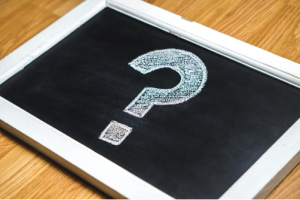45 Perspectives on the Cold War by Shauna Anderson
1. Perspectives on the Cold War: Newspaper article & letter to the editor

Black and white image of blank newspaper by OpenClipart (CC0 1.0)
| Curriculum context | VCE Modern History Unit 2 Area of Study 1 (VCAA, 2020) |
| Historical context | Cold War: Nuclear Arms Race |
| Historical thinking concept/s | Explore historical perspectives |
| Learning intentions | By the end of the activity students can outline the differing perspectives on the Nuclear Arms Race
Students can interpret different perspectives around the causes the Cold War and represent them in newspaper articles. |
Activity
Newspaper Article
In pairs or individually create two different newspaper articles (about 300 words each) with punchy headlines about the perspectives of the Cold War. These articles should include the differing perspectives of key people and civilians during the time of the Nuclear Arms Race. The article should reflect the ideologically opposed political climates such as communism or capitalism and how this may influence individual and collective opinions. Although the piece reflect the political context, aim to reflect possible perspectives from the time rather than your own.
- Include key dates and events surrounding the specific date of the newspaper article.
- Not include any information on events after to the date of the article.
- Include what country you as the writer are writing from.
Letter to the Editor
Individually, using a Random Number Generator from 1-3, create a character/imagined historical actor using the character traits in the table below. Once you have a created a character, investigate what kind of values your character might have had during the Cold War. Once you have enough understanding of this person’s values and way of life, write a letter to the editor to be submitted into a newspaper during May 1945, just 2 months before the first atomic bomb gets dropped on Hiroshima on the 6th of August 1945. The opinion piece should be based on primary and secondary sources on the Nuclear Arms Race which will influence your character’s thoughts and feelings at the time.
| Number | Gender | Age Group | Social Class | Employment Status | Nationality |
| 1 | Male | 15-25 years old | Lower Class | Unemployed | American |
| 2 | Female | 25-45 years old | Middle Class | Employed | Russian |
| 3 | – | 45-65 years old | Upper Class | Retired | Australian |
- Include important dates.
- Make you character traits clear.
- Include the characters beliefs, values and ideological position.
- Make it clear why your is writing in the newspaper, how does the Nuclear Arms Race affect them?
Peer review
At the conclusion of the activity, each group will conduct a peer review of another group’s newspaper article and letter. When doing so you need to look for grammar and punctuation as well as possible errors in historical information. You will need to complete a ‘3 Stars and a Wish’ feedback form for one of the newspaper articles so that the group can make any changes before being displayed in the classroom.
Resources:
U.S.- Russia Nuclear Arms Control
The Nuclear Arms Race and the Psychology of Power
References
American Museum of Natural History (2018). The Manhattan Project | AMNH. [online] AMNH. Available at: https://www.amnh.org/exhibitions/einstein/peace-and-war/the-manhattan-project.
Atomic Heritage Foundation (2014). Soviet Atomic Program – 1946 – Nuclear Museum. [online] https://ahf.nuclearmuseum.org/. Available at: https://ahf.nuclearmuseum.org/ahf/history/soviet-atomic-program-1946/.
Council on Foreign Relations (2023). U.S.-Russia Nuclear Arms Control. [online] Council on Foreign Relations. Available at: https://www.cfr.org/timeline/us-russia-nuclear-arms-control#:~:text=The%20nuclear%20arms%20race%20was.
Rothman, L. (2017). Survivors of the Atomic Bomb Share Their Stories. [online] TIME.com. Available at: https://time.com/after-the-bomb/.
Swift, J. (2009). The Soviet-American Arms Race | History Today. [online] Historytoday.com. Available at: https://www.historytoday.com/archive/soviet-american-arms-race.
VCAA. (2020). VCE Study Design: History 2022-2026. Victorian Curriculum And Assessment Authority. https://www.vcaa.vic.edu.au/curriculum/vce/vce-study-designs/history/Pages/index.aspx
War, I. of M. (US) S.C. for the S. on the M.I. of N., Solomon, F. and Marston, R.Q. (1986). The Nuclear Arms Race and the Psychology of Power. [online] www.ncbi.nlm.nih.gov. National Academies Press (US). Available at: https://www.ncbi.nlm.nih.gov/books/NBK219176/.
2. Perspectives on the Cold War: Walk and talk

A question mark drawn with chalk on small board by Tero Veralainen (Freerange Stock, Equalicense)
| Curriculum context | Modern History Unit 2 Area of Study 1 (VCAA, 2020) |
| Historical context | Cold War: Nuclear Arms Race |
| Historical thinking concepts | Causes and consequences
Construct historical arguments |
| Learning intentions |
Students will be able to present historical arguments on the causes of the Cold War based on the Nuclear Arms Race.
By the end of the lesson students can make and defend judgements based on evidence on the causes of the Cold War in a whole classroom discussion. |
Activity
Around the classroom you will see statements below about the Nuclear Arms Race written on large pieces of butchers paper. As you move around the room, share your thoughts and opinions with a peer on each of the topics. After students have shared opinions on each of the statements, as a whole class we will have a discussion where students will position themselves on a continuum of agree to disagree in the classroom for each statement. Students will then have a discussion to justify their thoughts and ideas about each of the statements in a fashion of an informal debate.
- Demonstrate your knowledge on the context and circumstances of the Cold War
- Demonstrate your knowledge of the Nuclear Arms Race and the key events leading up to the dropping of nuclear bombs on Hiroshima and Nagasaki and the events prior to the dropping.
Statements
-
Nuclear bombs being dropped during World War II was inevitable.
-
The United States of America were always going to win the Nuclear Arms Race.
-
Do you think another nuclear bomb will be dropped in your lifetime? Why/ why not?
-
If the Soviet Union won the nuclear arms race, do you think they would have dropped their nuclear weapon on Nazi Germany?
-
The desire to end the war was the largest reasons for the creation of the nuclear bomb.
-
On a global scale, the creation of nuclear weapons resulted in more power and influence for the United States of America. However, The Soviet Union still remained the most powerful and influential. Discuss.
Resources
The Manhattan Project & Einstein
Spies Who Spilled Atomic Bomb Secrets
References
American Museum of Natural History (2018). The Manhattan Project | AMNH. [online] AMNH. Available at: https://www.amnh.org/exhibitions/einstein/peace-and-war/the-manhattan-project.
Atomic Heritage Foundation (2014). Soviet Atomic Program – 1946 – Nuclear Museum. [online] https://ahf.nuclearmuseum.org/. Available at: https://ahf.nuclearmuseum.org/ahf/history/soviet-atomic-program-1946/.
Council on Foreign Relations (2023). U.S.-Russia Nuclear Arms Control. [online] Council on Foreign Relations. Available at: https://www.cfr.org/timeline/us-russia-nuclear-arms-control#:~:text=The%20nuclear%20arms%20race%20was.
Marian Smith Holmes (2009). Spies Who Spilled Atomic Bomb Secrets. [online] Smithsonian. Available at: https://www.smithsonianmag.com/history/spies-who-spilled-atomic-bomb-secrets-127922660/.
PSB American Experience (n.d.). Soviet Tests | American Experience | PBS. [online] www.pbs.org. Available at: https://www.pbs.org/wgbh/americanexperience/features/bomb-soviet-tests/.
VCAA. (2020). VCE Study Design: History 2022-2026. Victorian Curriculum And Assessment Authority. https://www.vcaa.vic.edu.au/curriculum/vce/vce-study-designs/history/Pages/index.aspx

